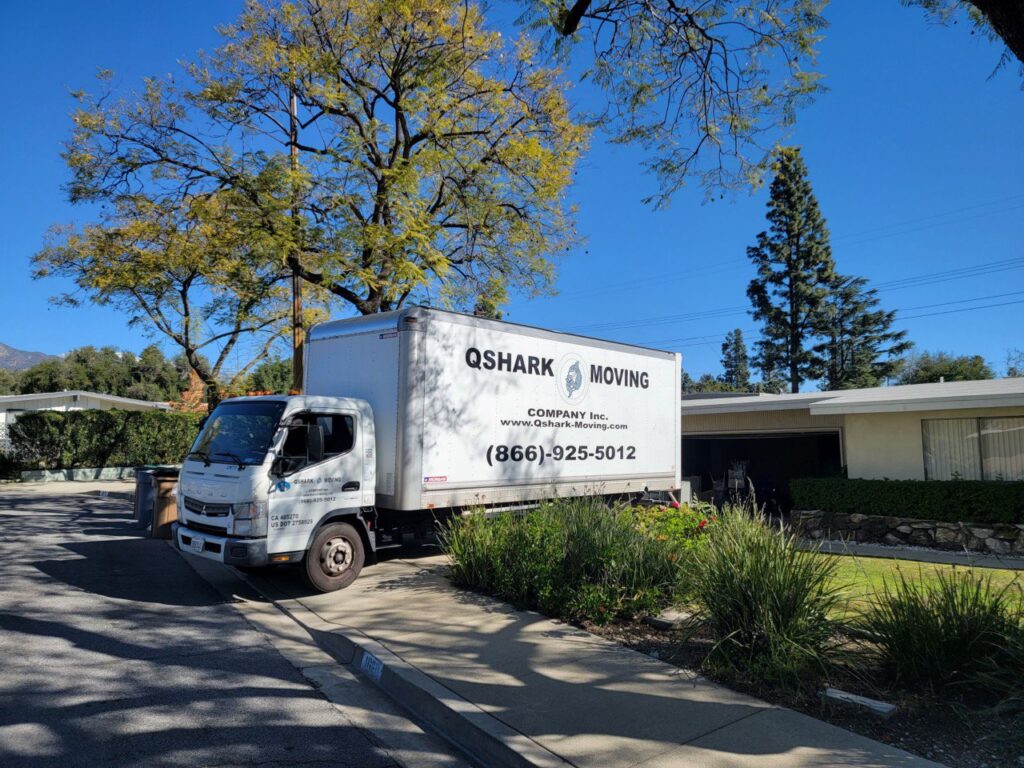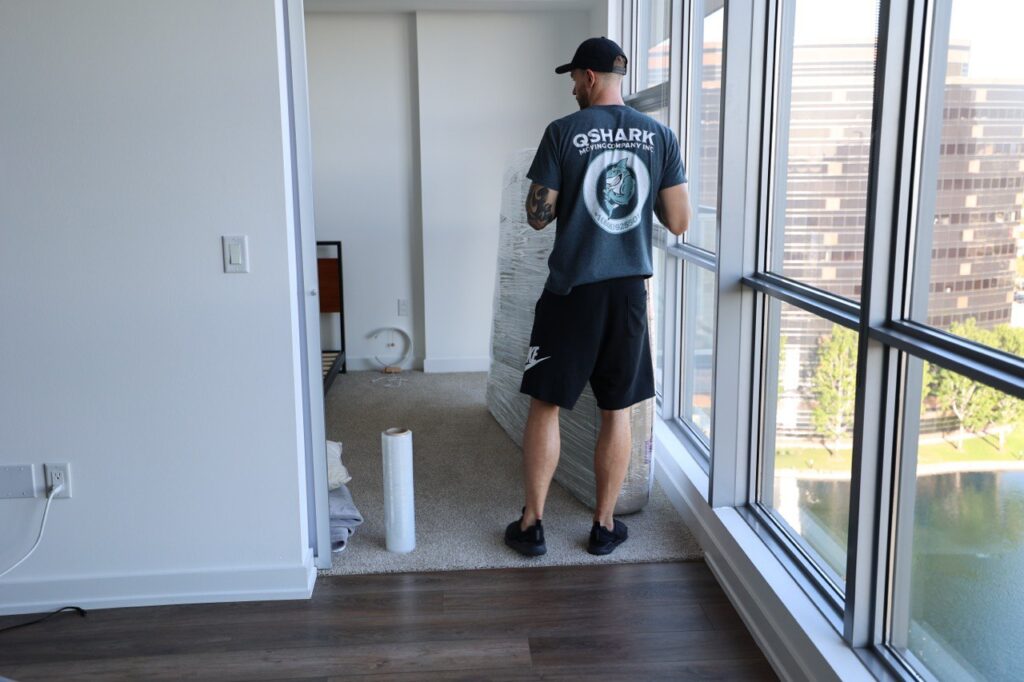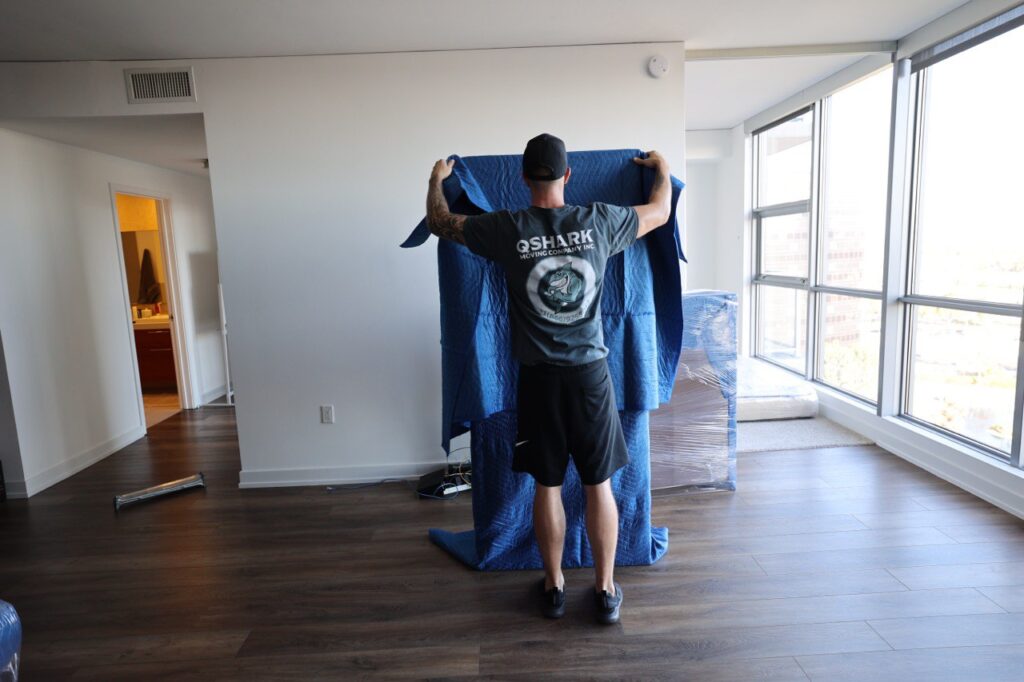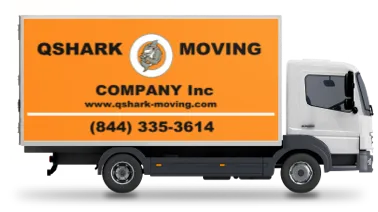
Movers Who Pack And Move
Deciding to move can be a significant event in one’s life. Whether relocating to a new home, moving offices, or simply downsizing, each comes with its own challenges. That’s why selecting a top-tier moving company to assist you is a crucial decision. This guide aims to shed light on the intricate process of moving, explaining how the best movers handle every step of the journey. Let’s learn more about movers who pack and move
The Importance of Choosing Professional Movers
Choosing professional movers is one of the most impactful decisions you can make when moving. Here’s why:
- Skillset: Professional movers have the skills and experience to handle your belongings safely. They are well-versed in packing, handling, and transporting a variety of items, including delicate ones like pianos (piano movers).
- Resources: Movers have the necessary equipment to facilitate a smooth move. This could range from packing materials to moving trucks and professional equipment.
- Time-Efficiency: Professional movers, whether local (local moving) or long-distance movers, know how to expedite the process without compromising the safety of your belongings.
- Stress-Reduction: Engaging a moving company’s packing services can significantly reduce the stress associated with moving. These experts pack, transport, and unpack your belongings, allowing you to focus on settling into your new space.
Identifying the Top Movers
You’ll want to ensure the company you choose ranks among the top movers in the industry. Here are a few characteristics to look for:
- Reputation: Check out customer reviews and ratings. Word-of-mouth referrals and online testimonials can provide a clear picture of a company’s reputation.
- Services: The best movers offer a range of services, such as office moving (office moving) and even day labor (day labor).
- Pricing: While the cheapest movers may not always offer the best service, reasonable and transparent pricing is essential. A reputable company will provide an estimate upfront with no hidden costs.
- Coverage: The mover should be able to accommodate your specific needs, whether you’re moving locally or long-distance. They should offer service in your area, whether you’re looking for Orange County movers, Movers in San Diego, or Irvine Movers.
An Overview of This Guide
This guide provides an in-depth overview of the moving process, explaining each step from the initial consultation to the post-move follow-up. By understanding what to expect, you can prepare for a stress-free move. Let’s get started!
Step 1: Making the Decision to Move
The journey to a new home or office starts with the decision to move. This is a significant life event and one that comes with various considerations.
Reasons People Move
People move for various reasons, and understanding why you’re moving can help streamline your process. Common reasons include:
- Job relocation or new job opportunity: This is often the reason behind long-distance moves.
- Upsizing or downsizing: Family size or lifestyle changes often warrant moving to a larger or smaller living space.
- Change of scenery: Some people move because they desire a new environment or lifestyle.
- Cost of living: Sometimes, living in a current location becomes too high, leading to a move.
When is the Right Time to Move?
Timing a move is crucial. Here are a few factors to consider:
- Season: Spring and summer are popular moving times due to favorable weather conditions.
- Personal schedule: Consider your personal and professional commitments. If you have children, planning the move during the school holidays might be best.
- Availability of moving companies: Keep in mind that the best movers might be booked well in advance during peak seasons.
Knowing When You’re Ready to Move
Moving is a big step. Here are a few signs that you might be ready:
- Financial preparedness: You have budgeted for all moving expenses, including the cost of a moving service.
- Emotional readiness: You’re mentally prepared for the change that comes with moving.
- Physical readiness: You’re prepared for the tasks involved in moving, like sorting, packing, and cleaning.
Deciding to move is the first step. In the next section, we’ll talk about choosing the right moving company.
Step 2: Choosing a Moving Company
Choosing the right moving company can make all the difference when it comes to having a smooth and stress-free move. This section will guide you on how to pick the best company for your specific needs.
Why Choose Professional Movers?
The benefits of hiring professional movers far outweigh the DIY approach:
- Expertise: They have the necessary skills to handle various items, from delicate pieces to bulky furniture.
- Safety: Professional movers prioritize the safety of your belongings. They’re trained to properly handle, pack, and transport items to prevent damage.
- Efficiency: With a professional moving company, you’re leveraging their experience to ensure a swift and efficient move.
- Peace of mind: Perhaps the biggest benefit of hiring professional movers is the peace of mind that comes with knowing experts are handling your move.
How to Contact a Moving Company
When you’re ready to reach out to a moving company, you should have the following information ready:
- The moving date or preferred moving period.
- Your current location and your destination. For example, if you’re moving in or around Orange County, be sure to mention this to find the best Orange County Movers.
- An estimated inventory of your belongings. This will help the company provide a more accurate quote.
Most companies offer a few ways to get in touch. You can typically contact them by phone, email, or a contact form on their website.
What Information to Provide When Contacting a Moving Company
When you contact a moving company, the more information you can provide, the better. Here’s what you should prepare:
- Your preferred moving dates.
- Details about any large, heavy, or special items.
- Whether you need additional services like packing, storage, or day labor.
Having all this information ready will help the moving company provide a more accurate quote and a smoother service.
Step 3: Initial Consultation
After reaching out to a moving company, the next step is the initial consultation. This consultation allows you to learn more about the services they offer, discuss your specific needs, and get an estimate for your move.
What to Expect During the Consultation
During the consultation, you can expect the following:
- Discussion about your specific needs: This includes the size of your move, any special items, your moving dates, and other services you may require, like packing.
- Information about their services: The moving company will detail the services they provide, which may include local moving, office moving, long-distance moving, and more.
- Estimate: Based on your discussion, the company will provide an estimate of the cost for your move.
Providing Details About Your Move
The more information you provide during the consultation, your estimate will be more accurate. This includes:
- Size of your move: The number of rooms or the square footage of your home/office can help determine the size of your move.
- Inventory: Provide a list of your belongings, especially large or special items. This will help the company plan for packing, loading, and space requirements in the moving truck.
- Moving date: Your preferred moving date can influence the cost, especially during peak moving seasons.
- Special requirements: If you have any special requirements like piano moving or the need for day labor, be sure to mention this.
Discussing Estimated Costs
The moving company should provide you with a detailed estimate of the costs involved in your move. This includes:
- Packing materials and services: If you’ve opted for their packing services, the cost for this should be included in the estimate.
- Moving costs: This is the cost of moving your belongings from your old location to the new one.
- Additional services: Any extra services like storage or special item handling should also be included in the estimate.
Schedule and Timeline Discussion
Finally, you’ll discuss the schedule and timeline for your move. This includes:
- Packing date(s): When will packing be done? This may take place on one day or over several days, depending on the size of your move.
- Moving date: Confirm when your belongings will be transported to the new location.
- Delivery date: For long-distance moves, discuss when you can expect your items to arrive at the new location.
The initial consultation sets the foundation for your move. After this, the moving company will typically conduct a pre-move assessment, which we will discuss in the next section.

Step 4: Pre-Move Assessment
After the initial consultation, the moving company will typically conduct a pre-move assessment. This allows them to understand better your move’s scope and any potential challenges they might face on a moving day.
Purpose of the Pre-Move Assessment
The pre-move assessment has several purposes:
- Determining the volume of items: The company will estimate the number of boxes and the type of packing materials needed.
- Identifying special items: If you have large or fragile items such as a piano, the piano movers will need to evaluate how best to handle these items.
- Evaluating access: The movers need to assess access to your current location and your new one. This includes checking for narrow doorways, stairs, or tight corners that could pose a challenge on a moving day.
What Happens During the Pre-Move Assessment
During the pre-move assessment, the moving company may:
- Take inventory: The moving company will catalog your belongings. This serves as a record for both parties and helps the movers determine the size of the moving truck needed.
- Assess packing needs: They’ll estimate the number and type of boxes needed and any special packing materials required for fragile items.
- Discuss special instructions: If you have any specific instructions or concerns, this is a good time to bring them up.
Preparing for the Pre-Move Assessment
To ensure the pre-move assessment is as accurate as possible, you should:
- Organize your belongings: Make sure everything you plan to move is visible and accessible to the movers.
- Point out special items: If you have items that require special care or handling, point these out to the movers.
- Ask questions: Don’t hesitate to ask the moving company questions or voice concerns.
After the pre-move assessment, the moving company can finalize your moving quote and begin planning for the move in earnest.
Step 5: Packing Your Belongings
Packing is often seen as one of the most stressful parts of moving. However, a professional packing service can make this process much easier and more efficient.
Why Use a Packing Service?
Here are a few reasons to consider using a packing service:
- Efficiency: Professional packers are trained to pack quickly and efficiently.
- Safety: They know how to properly pack fragile items to prevent damage during the move.
- Materials: Professional packers come with all the necessary packing materials, which saves you the effort of gathering them yourself.
What to Expect When Using a Packing Service
Here’s what you can expect when you hire a packing service:
- Supplying packing materials: The packing service will supply all necessary packing materials, including boxes, packing paper, bubble wrap, and more.
- Professional packing: The packers will carefully pack all your items, ensuring fragile items are appropriately protected.
- Labeling: They’ll label each box clearly, making it easier to unpack at your new location.
Preparing for the Packing Process
Here’s how to prepare for the packing process:
- Sort your items: Decide what you want to take with you and what you’d like to sell, donate, or discard. This will ensure the packers only pack what you intend to move.
- Set aside personal items: Pack a personal bag for each family member with essentials like toiletries, a few days’ worth of clothes, and important documents. These should travel with you, not the moving company.
- Clean and prepare appliances: If you’re moving appliances, they should be cleaned and prepared for the move. For instance, defrost your freezer at least 24 hours before the move.
Understanding the Packing Process
Here’s what the packing process typically involves:
- Furniture disassembly: Large furniture may need to be disassembled for transport. The Packers will take care of this.
- Packing and wrapping: Each item is individually wrapped and packed into boxes. Fragile items are given extra protection.
- Loading: The moving team will load the boxes onto the moving truck once everything is packed.
Step 6: Moving Day
Moving day can be hectic, but with a reliable moving company, you can ensure that things go as smoothly as possible.
What to Expect on Moving Day
On a moving day, here’s what will typically happen:
- The arrival of the moving team: The moving team will arrive at your home at the pre-agreed time. Be sure to be ready for their arrival.
- Review of the plan: The moving team will review the moving plan with you to ensure everyone is on the same page.
- Loading of the moving truck: The moving team will start loading your packed boxes and furniture onto the truck. Items will be loaded strategically to ensure safe and efficient transportation.
How to Prepare for Moving Day
Here are some ways to prepare for moving day:
- Have your personal items ready: Make sure all the items you’re personally transporting are packed and ready. This includes your essential bag with the items you’ll need right away at your new home.
- Clear a path: Make sure there’s a clear path in and out of your home for the movers to carry your belongings. This includes clearing any tripping hazards and making sure all doors are unlocked.
- Be available: Stay available if the movers have questions or need clarification.
The Role of the Moving Company on Moving Day
The moving company plays several crucial roles on moving day:
- Transporting your belongings: The company is responsible for transporting your items safely to your new home. If you’re moving within Orange County, your Orange County Movers will handle the entire transportation process.
- Communication: The moving company should keep you informed about any issues or delays that may arise.
- Troubleshooting: The moving company is there to handle any unexpected issues that may come up during the move, such as dealing with difficult items or navigating tight spaces.
Step 7: Delivery and Unloading
Upon arrival at your new home, the moving company will unload your belongings and, if arranged, help you unpack.
What to Expect Upon Delivery
Here’s what typically happens upon delivery:
- Unloading of the moving truck: The movers will begin unloading your items from the truck. Items will be placed in the rooms you designate.
- Assembly of furniture: If any items were disassembled for the move, the movers will reassemble them.
- Unpacking (if requested): If you’ve requested unpacking services, the movers will help you unpack your belongings and dispose of the packing materials.
Checking Your Belongings
After everything has been unloaded, take some time to check your belongings. Refer to the inventory list created during the pre-move assessment to make sure everything has arrived and is in good condition.
The Role of the Moving Company
The moving company plays a few roles during this stage:
- Unloading and assembly: The moving company is responsible for unloading your items and assembling any furniture that was disassembled.
- Handling of issues: If any items are missing or damaged, the moving company should help resolve these issues.
- Final paperwork: The moving company will provide a bill of lading, a receipt for your move. Review it carefully, and make sure you understand everything before signing.
You’re almost done with your items unloaded and your new home filled with your belongings. There’s just one step left: post-move.

Step 8: Post-Move
Even after your belongings are unloaded, there’s still some work to do. Let’s look at the final steps of your moving process.
What to Do Post-Move
Here are some tasks you’ll need to tackle after your move:
- Unpacking: You’d need to unpack your belongings if you didn’t opt for a full unpacking service. Take your time and unpack room by room.
- Checking for damage: While you should have done an initial check when your items were delivered, now is the time to do a thorough check. If you find any damage, report it to the moving company as soon as possible.
- Dispose of packing materials: You’ll likely have a lot of packing materials left over. Most moving companies will remove and dispose of these for you if arranged.
Evaluating Your Moving Experience
After you’ve settled into your new home, take some time to reflect on your moving experience. Did the moving company meet your expectations? Were there areas where they excelled or fell short? Providing this feedback to the company can help them improve their services.
Reviewing the Moving Company
If you were satisfied with your moving experience, consider leaving a review for the moving company. Reviews help other customers make informed decisions and can be a great way to show your appreciation for a job well done.
Congratulations! You’ve successfully navigated the moving process with the help of a professional moving company. Remember, whether you’re moving locally, planning a long-distance move, or relocating your office, a professional moving company can make the process much smoother and less stressful. So for your next move, consider hiring professional movers to assist you.
Conclusion: Your Ultimate Guide to a Successful Move
Relocating, whether it’s to a new home or office, can be a complex and stressful process. However, by understanding each step and leveraging the expertise of a professional moving company, you can transform this daunting task into a manageable and even exciting journey.
By following this guide, you’ve learned:
- The importance of choosing a reputable moving company to assist you throughout the process.
- The necessary steps to prepare for your move, including decluttering your belongings, organizing a pre-move assessment, and preparing for the packing process.
- What to expect on moving day and how to make it as smooth as possible.
- The steps involved in unloading and checking your belongings once they arrive at your new destination.
- The actions to take post-move include unpacking, disposing of packing materials, and reviewing the moving company.
Remember, every move is unique and may present its own set of challenges. However, these challenges can be easily overcome with the right preparation and a professional moving company like Qshark Moving Company.
Whether you’re looking for local moving services, long distance movers, office moving services, or even specialized services like piano moving or day labor, there’s a solution for you.
Take the stress out of your next move by following this guide and enlisting the help of professional movers to ensure a successful relocation. Happy moving!


